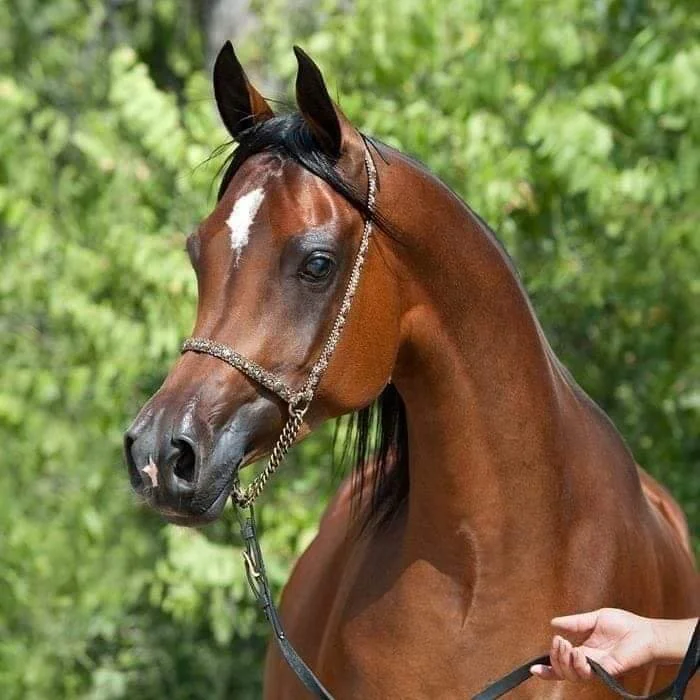Egyptian Arabians
The Egyptian Arabian horse, also known as the "Straight Egyptian," is a bloodline within the Arabian horse breed that traces its ancestry exclusively to horses bred in Egypt, particularly those associated with the royal studs of wealthy Egyptian leaders like Viceroy Mohammed Ali and his grandson Abbas Pasha I in the 19th century. These horses are considered by many to be the purest representatives of the Arabian breed, with pedigrees that can be traced back to the desert-bred horses of Bedouin tribes.
Key Characteristics:
Distinctive Head: Egyptian Arabians are known for their refined and elegant heads, often featuring a more pronounced "dished" profile (a concave shape between the eyes and muzzle), a broad forehead (jibbah), large, dark, expressive eyes, and small, delicate muzzles and ears.
Arched Neck: They possess a characteristically long and well-arched neck (often described as a "swan neck") that contributes to their graceful appearance.
Compact and Strong Body: While appearing elegant, they have a strong, compact body with a short back, deep chest, and well-sprung ribs, contributing to their endurance.
High Tail Carriage: They naturally carry their tails high, especially when in motion, which adds to their proud and spirited presence.
Fine Bone Structure: They have a finely chiseled bone structure, which, despite its delicate appearance, is dense and strong, contributing to their stamina.
Excellent Endurance: Like other Arabian horses, Egyptian Arabians are renowned for their exceptional stamina and the ability to cover long distances efficiently.
Versatility: Beyond their beauty, they are athletic and versatile, participating in various equestrian disciplines such as endurance riding, dressage, jumping, and Western riding.
Temperament: They are intelligent, sensitive, and known for forming strong bonds with their handlers. While spirited, they are generally willing and eager to please when treated with respect.
Coat Colors: Their coats are typically solid colors such as bay, gray, chestnut, and black. White markings are common, and the rabicano pattern (white hairs mixed in the coat, especially at the flanks and tail) can also occur.
History and Significance:
The Arabian horse, in general, is one of the oldest horse breeds in the world, with evidence of similar horses in the Middle East dating back thousands of years. The Bedouin people of the Arabian Peninsula played a crucial role in selectively breeding and preserving the purity of these horses, valuing traits like endurance, courage, and loyalty essential for desert life and warfare.
In the 19th century, significant efforts were made in Egypt to maintain the purity of specific Arabian bloodlines. The horses collected and bred by figures like Mohammed Ali Pasha and Abbas Pasha I were highly prized, and their descendants form the foundation of what is known today as the Egyptian Arabian. These horses were carefully pedigreed, with their lineage often memorized and documented.
Egyptian Arabians gained international recognition for their beauty and refinement and were imported to other parts of the world, significantly influencing other Arabian bloodlines and various light horse breeds.
Today, breeders dedicated to preserving the "Straight Egyptian" bloodlines continue to emphasize maintaining the unique characteristics and purity of these horses. They are highly valued in halter shows due to their classic Arabian conformation and are also appreciated as versatile riding horses. Organizations like The Pyramid Society (now the Pyramid Society Foundation) have played a crucial role in promoting and preserving this distinct bloodline.
Contact us
Interested in working together? Fill out some info and we will be in touch shortly. We can’t wait to hear from you!

